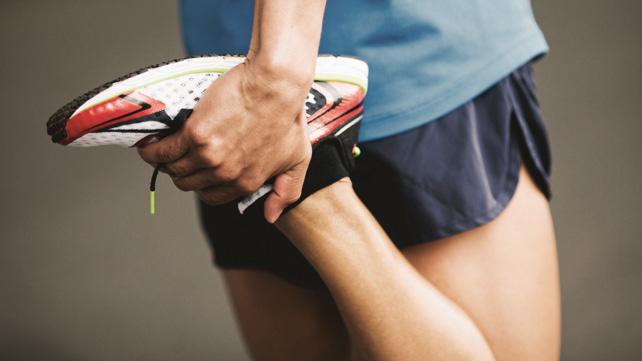For the effective care of a school child with either physical or mental handicaps a complete diagnostic picture is essential. It cannot be provided by the parent or the physician or the teacher separately, for each sees different aspects of the child's problem. Various ways of bringing together the necessary information are here described. A school medical adviser can review the available data with the school psychologist and then discuss the findings with the private physician. In communities where there are medical schools, diagnostic evaluation centers can be set up and their findings interpreted to the family by the general practitioner or the pediatrician. In any case, the diversity of health, behavior, and learning problems is such that the school health program must be viewed as a teamwork project with emphasis on the role of private medical practice.
What Are Diabetes Home Tests?
Testing blood glucose (sugar) is an essential part of your diabetes care plan. Depending on your current condition, you may need to visit your doctor several times a year for formal testing. You may also need to go to your doctor for preventive testing, such as cholesterol checks and eye exams. While staying in touch with your doctor is important for staying on top of your treatment plan, you can and should test your blood sugar on your own, as long as your healthcare team advises you to.
Self-monitoring your blood glucose may be vital to your treatment. Testing your own levels allows you to learn your blood sugar and manage it no matter the time of day or where you are.
Learn how these tests work and talk to your doctor about the benefits of self-monitoring.
Part 2 of 6: Who It’s For
Who Should Use Diabetes Home Tests?
Your doctor will help you decide if you need to test your blood sugar at home. If you do, your doctor will help you determine how often and what times of day you should test. Your doctor will also tell you what your blood sugar targets are. You may consider diabetes home tests if you have:
- Type 1 diabetes
- Type 2 diabetes
- prediabetes
- symptoms of diabetes
By keeping track of blood glucose, you can discover problems in your current diabetes care. According to the Centers for Disease Control and Prevention (CDC), normal blood glucose ranges between 70 and 140 milligrams per deciliter (mg/dL). Low blood sugar (hypoglycemia) is below 70 mg/dL, and high blood sugar (hyperglycemia) is well above the normal range. By maintaining glucose at a normal range, you may help prevent diabetes complications such as:
- diabetic coma
- eye disease
- gum disease
- kidney damage
- nerve damage
Part 3 of 6: Testing
Performing the Test
Blood glucose tests come in varying forms, but they all have the same purpose: to tell you what your blood sugar level is at that point in time. Most home tests come with:
- a lancet (small needle)
- a lancing, or lancet, device (to hold the needle)
- test strips
- a glucose meter
- portable cases
- cords to download data (if needed)
Start by washing your hands, and then put the lancet into the lancet device so it is ready to go. Before using the lancet, place a new test strip into the meter. Prick your finger with the lancet in the protective lancing device. Next, carefully place the subsequent drop of blood onto the test strip and wait for the results. Results should generally show up within seconds.
With some meters, you need to be sure the code on the strip matches the code on the meter. Also, be sure to check the date on the strips every once in a while to make sure they aren’t out of date. Finally, most meters now have a way to use an alternative site for testing, such as your forearm. Talk to your doctor to decide what is best for you.
Part 4 of 6: Tips
Tips for Accurate Testing
The fingers traditionally offer the most accurate results. Some tests allow you to prick your thigh or arm, but you need to check with your doctor before doing so.
The CDC recommends two to four tests per day if you are on insulin. You may consider testing before and after meals to see how your diet affects blood glucose. It’s especially important to test after eating simple carbohydrates or sugary foods to make sure your glucose isn’t too high. It’s also important to test whenever you make a change to your treatment plan or if you feel you’re getting sick.
A blood glucose chart is essential for tracking your results. Whether you keep track of your readings on paper or electronically, having this information can help you identify patterns and potential problems. You should save your charts and take them to your next doctor’s visit. When writing down your results, also be sure to log:
- the date and time of the test
- any medications you’re taking, as well as the dosage
- Whether it was before or after a meal
- foods you ate (if after a meal, note the carbohydrate content of that meal)
- any workouts you did that day and when you did them
Part 5 of 6: Home vs. Medical
Home Testing vs. Medical Testing
Self-monitoring your blood sugar is crucial in determining how your diabetes is doing on a daily basis. It’s unreasonable to assume that a few tests a year at the doctor’s office can give an accurate portrayal of your condition because glucose levels fluctuate throughout the day. However, this doesn’t mean that home tests should replace your regular preventive testing either.
In addition to self-monitoring at home, your doctor will likely recommend an A1C test. It measures how your blood glucose has been averaging over the last two to three months. According to the American Association for Clinical Chemistry, A1C tests are ordered up to four times per year. Getting regular lab tests can also help you determine how well you are controlling your diabetes. They will also help you and your healthcare team to decide how often to use your home test, as well as what your target reading should be.
Part 6 of 6: Know Your Numbers
Know Your Numbers
Self-monitoring your blood sugar is essential to maintaining your health. If your readings are unusually low or high, call your doctor right away. The CDC recommends seeking emergency medical attention if your readings are below 60 mg/dL or above 300 mg/dL.









